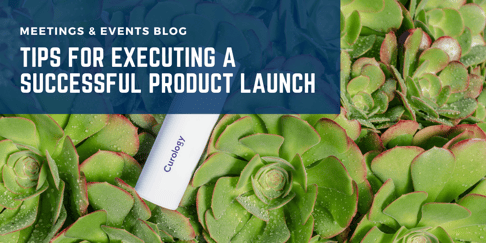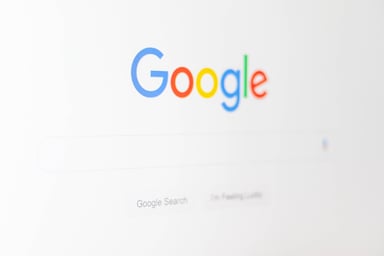
MeetingPackage
As you may guess, launching a new product or service isn’t exactly a cakewalk. It’s one that has many complicated steps to take and hoops to jump through. Sadly, just having an incredible product or service alone won’t do you much good, and gone are the days when it was enough to draft a press release with the PR firm you’d hired. Just to get your upcoming launch published in the news and seen by your target audience has become increasingly competitive as the society’s evolved. And you’ve likely spent far too much time, money, sweat and tears on developing that incredible product of yours to just fumble its introduction to the world.
Thus, establishing a clear strategy for your product launch can have amazing effects for your levels of success in your sales. You need to get people thrilled by your product idea, you need to get the word out of the existence of such a product, and you need to find the right audience to attend the product launch event – just to name a few of the things that ought to be on your strategic itinerary. Remember, it’s not in the quantity of the promotional material, it’s in the quality of it.

Define what your goals and priorities are
Before you do anything else, you need to know what your goals for this launch is. Are you launching a whole new company? Are you launching a new brand for your already existing company? Or are you launching the latest product or service for your brand? Or is it something else?
Each different type of a launch and each different company may have differing goals from each other, and in order to have the most successful launch possible, you need to know just what those are. It’ll do you good to follow the SMART formula when setting your goals.
As for setting your priorities, they’re typically closely aligned with your goals. In a world with only a certain amount of time and resources for you to use, it simply isn’t possible to do absolutely everything you may want to do. Thus, it is of utmost importance for you to know your order of priority, so that you can ensure the most important things do get done. Hopefully there’ll be spare time for you to accomplish some of the items that may not be the most important but are most aligned with your wants!
Prioritizing becomes especially handful when you’re a company that’s growing quickly and has multiple products, features and services you’re putting out, often close in time. You may be tempted to announce each and every one of them, but you may be surprised to find out that’s not the smartest move for you to make. Instead, what you’ll want to do is put all of the products, features and services in an order of priority, and then build up your announcement and launching tactic based on that list. Maybe Matt Hodges’ framework could be of aid to you?
Get clear on what you need to know before you plan for the launch
First things first, you absolutely need to know what and for who your product is. What does your product have to offer? Is there existing demand in the market that your product works as an answer to? These are just a few examples of the questions you and your team should ask yourselves when you are at the beginning stages of putting together a strategy for the product launch. It’s much better to figure it out at this point if there’s something with your product or service that’s not actually working, as opposed to a day before the launch. It’s crucial that you do this or else you might wind up losing yourself a ton of money. The more your product can sell itself, the better, though of course not absolutely every product can operate this way. Additionally, once you are certain of who your audience is and what your product can offer them, you also already have developed the list of items to highlight during your product launch event!
To get certain of your targeted audience, create a buyer persona profile – or a few of them – if you haven’t yet. It’s a fairly simple process, but one that’ll provide you with tons of valuable information.
A part of knowing your product is also to research your competition to make sure you’ve found just the right way to differentiate yours from theirs. That, in turn, entails also creating your unique selling proposition and unique value proposition.

Start planning for your product launch early
It is recommended you start planning for the launch at least 2 or 3 months ahead of the D-day. This step largely involves researching and finding the reporters you feel are best fit to publish stories of your impending launch, and beginning to build good professional relationships with them. Having these relationships with those reporters is absolutely integral for getting your product launch and press release a spot in the media, especially if you care about getting that good spot that’ll bring your company, brand and product all the positive press they need.
Another, likely even more important reason why you should start planning early is because your plan is never going to be as air tight as you’d wish, and that’s simply the reality. Something you’ve planned for will not pan out for some reason. Something else you’ve planned for will get delayed. And what’s that unexpected obstacle you can see coming your way? Though you may not be able to entirely avoid any problems, by starting the process early enough you can rest assured in knowing you’ll have ample time to take care of them.
Consider using influencers
In today’s world, people are relying an increased amount of trust on word of mouth coming from their peers, so by employing influencers that match your target audience as tools to start that word of mouth buzz, you are working on establishing that trust. Spend some time researching and finding those influencers, and once you’ve successfully reached out to them, introduce them to your upcoming product, share your news and announcements with them first, and once you’re ready for it, share a sample of sorts with them that they can then review and share on their social media channels for the audience you’re targeting to reach. This has been proved to be an excellent way to build up sales for your product, and it often comes with less monetary burden than advertising all over mass media would.
Choose the right venue for your product launching event
While the purpose of the event is to put your product front, right and center, you’ll greatly benefit from a venue that’s interesting and appealing to your audience. Is it possible for you to find a venue that can be readily associated with your product? Choose it! The location of the venue for your event is also incredibly important; you’ll guarantee a larger turnout simply by choosing a great venue that’s not too far from where your company and much of its target audience is located in. This mostly matters in cases where your target audience is tied to a certain location.
Include a theme with your event
You’ll want the theme to be related to your industry. Even better if it’s related to the product you’re about to put out. Based on your chosen theme you will build the launch event in the venue and also know which venue to choose in the first place. By having a theme, you’ll find it easier to spark your target audience’s interest in committing to a purchasing decision when they are attending your product launch event.
Do not launch until you’ve tested it
And we’re not talking about just the product here but everything else that needs to go right on the day of the event should be checked and tested ahead of time, and early enough it can be fixed if something’s found to be wrong. By testing, you’ll get confirmation you’re ready for the launch, or be informed you should perhaps look into postponing it for the time being. At the same time, though, do remember you don’t have to be absolutely perfect with your launch; sometimes an early launch for a product that wasn’t at its 100% readiness yet may pay off in the form of data on the true wants of your customers.
Can you tie your launch to a larger trend or event in your field? Do it!
This not only readily provides a small further proof of your product’s need to be in the market, but also lets you get increasingly creative and ambitious with planning your launch. Especially tech companies today love to hold keynote event product launches, made popular originally by Apple, but you can also use the platform of a conference hosted by another major company in your field, or go small and use customer dinners, local pitch competitions, and so on to your favor.
Remember to promote
Now, whether you’re doing it solely through influencers or mass media or through a combination of both, you can’t expect anyone to buy your product or attend your launching event if they don’t know about it! For launches, press releases are traditionally very much needed, but in addition to a press release, you’re more than welcome to use other avenues to promote as well. By creating buzz for your event in advance, you’ll raise people’s interest towards your product and your event, and get them to show up on the day of! So take a moment to sit down with your team to develop the best promotional strategy for your product and company, if you haven’t yet. Focus on the channels that you have deemed to be the best fit for you, instead of blindly throwing your promotional material across all of Internet.
Keep track of your team throughout the process
As we may already know, an employee that is satisfied with their work and organization are often more productive. And an impending product launch is largely a time you’ll want all hands on deck and as productive as can be. Don’t micromanage but have some oversight to ensure that your employees are staying on top of their assigned tasks, and also have periodic check-ups to make sure they’re all handling the work load fine and perhaps find additional ways to reward them for their hard work.
Have realistic expectations
Especially if you’re a new player entering the market, don’t put too much pride in believing you’ll immediately make it big. But also don’t let yourself get discouraged just because you’re not immediately having your sales skyrocket. Just keep being realistic, hardworking and consistent. For example, keep following up with those reporters and influencers you’re hoping to get the news of your product out there – don’t go overboard with how often you’ll be messaging them, but do message them more than once even if you don’t immediately get a response.
Follow up after the event
The moment the event ends doesn’t equal the moment all is done for your product launch. Instead, take advantage of that small window of opportunity the day after your launching event to drum up a bit more hype, or at least to maintain the current momentum a bit longer. By doing this you may be able to gather a few more sales. These follow up actions don’t have to be much different from what you did pre-launch, you can use very similar tactics as you did before. And in case your product for some reason didn’t sell quite as much as you would’ve hoped, how about offering an additional incentive such as a trial or a complimentary add-on?
Where are you at with your process of launching your product or service? If you’re still at the beginning, have you found this guide to be helpful in getting started? And if you’ve found yourself having sidetracked during the process of executing a successful product launch, did this guide contain information with which you’ll be able to course correct?
Read also these blog posts:




